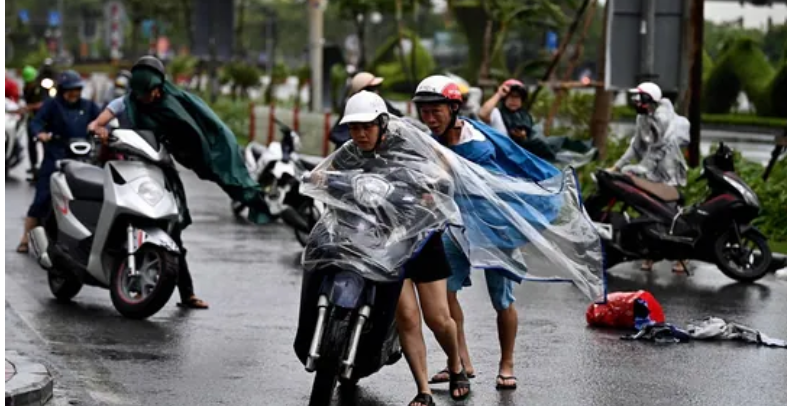Super Typhoon Yagi made landfall in northern Vietnam on Saturday, uprooting thousands of trees, sweeping boats out to sea, and tragically killing one person. This destructive storm left a trail of devastation after already claiming at least 23 lives across southern China and the Philippines.

The typhoon hit the provinces of Hai Phong and Quang Ninh, with winds exceeding 149 kilometers (92 miles) per hour, according to Vietnam’s National Centre for Hydro-Meteorological Forecasting.
In Hai Duong province, a man lost his life when strong winds brought down a tree as Yagi approached. Streets in Hai Phong were littered with uprooted trees, twisted metal roofing, and broken signboards.
“It’s been years since I’ve seen a typhoon this powerful,” said Tran Thi Hoa, a 48-year-old resident of Hai Phong. “The wind and rain were deafening.
Impact of Super Typhoon Yagi
Chinese state media reported winds exceeding 230 kilometers (143 miles) per hour as Yagi passed through, forcing the evacuation of over 460,000 people. In southern China, at least three people were killed and 95 were injured after the storm ravaged Hainan and Guangdong provinces. Buildings, schools, and homes were severely damaged, with several completely unroofed by the intense winds.
Earlier in the week, the typhoon struck the Philippines, killing at least 20 people and leaving 26 others missing. Yagi caused widespread flooding and landslides on the island of Luzon before intensifying into a super typhoon.
Frequent Typhoon Activity in the Region
Typhoons often impact southern China and neighboring regions during the summer and autumn months. These storms typically form in the warm waters east of the Philippines and Thailand, wreaking havoc as they travel across densely populated areas.




